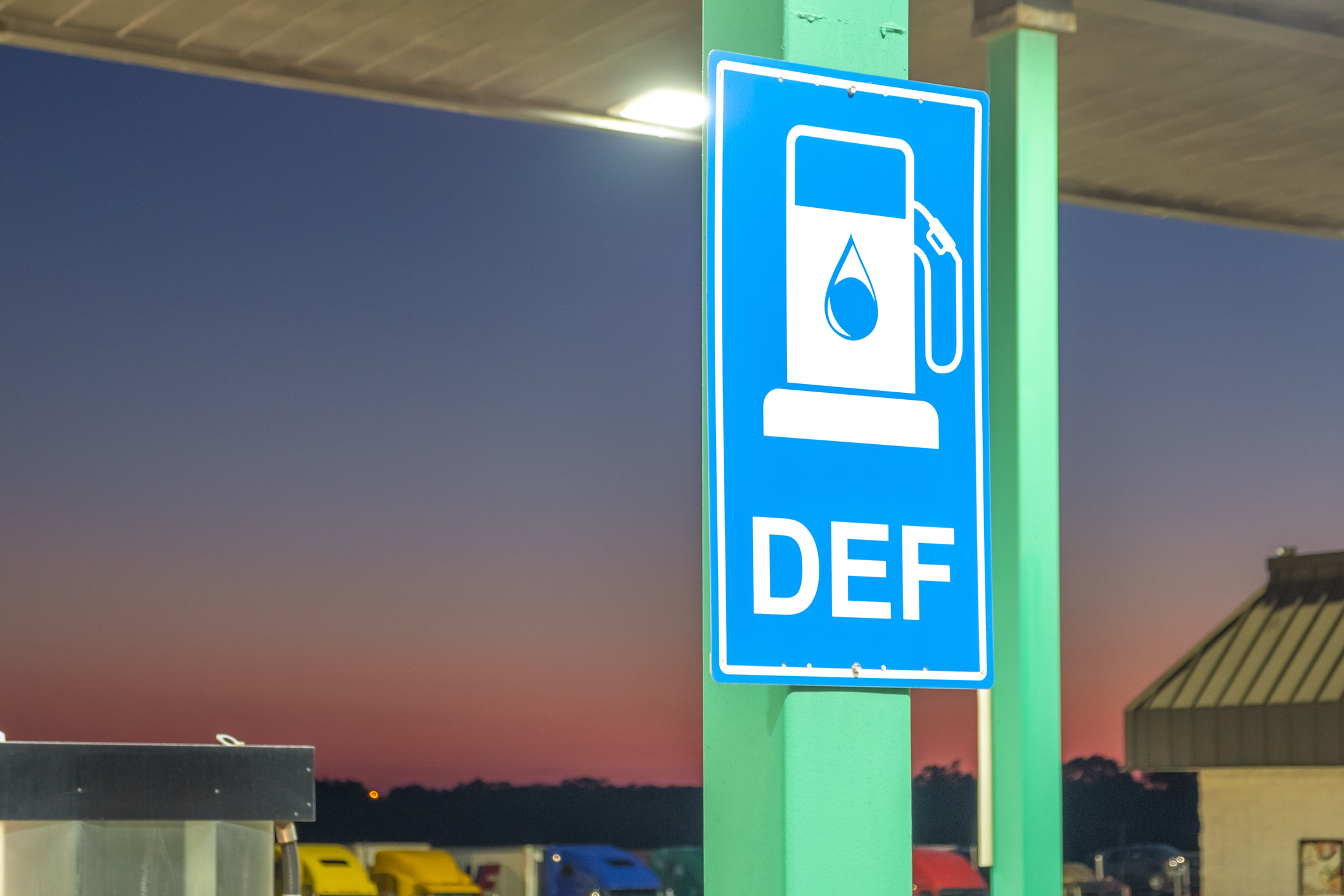Best Practices for Fleet Managers in Navigating Diesel Exhaust Fluid

Preventive vehicle maintenance is always a top priority for fleet managers. It’s critical to keeping drivers and the public safe. It reduces costs, improves efficiency and productivity, and decreases a fleet’s carbon footprint.
Ensuring vehicles are properly maintained is far from easy. It’s one of the biggest challenges fleet managers face. With the many maintenance tasks to stay on top of, items often get overlooked.
One of the easiest to miss is the diesel exhaust fluid (DEF) in the vehicle’s DEF tank. As with any engine fluid, DEF is essential to keeping vehicles up and running and also compliant with federal emissions standards set by the Environmental Protection Agency (EPA).
DEF: An Essential Part of Your Fleet’s Preventative Maintenance
DEF is a mixture of urea and deionized water. Non-flammable, it’s injected into exhaust gases before they leave the tailpipe, causing a chemical reaction that reduces the nitrogen oxides in the engine’s exhaust, the carbon emissions, and particulate matter.
But there’s a catch. To achieve reduced emissions and other benefits DEF provides — improved fuel economy, improved horsepower, and reduced engine wear — DEF must be handled and stored correctly. If it’s not, you risk a stalled chemical reaction and an increase in the production of harmful emissions.
The good news is that the proper handling and storage of DEF is not rocket science. Putting in place best practices to help you navigate the particulars of DEF will keep your vehicles and operations running smoothly and safely.
Let’s take a look at the “top five.”
1. When to Change DEF: DEF has a limited life and may need to be changed before a vehicle goes back on the road. According to the American Petroleum Institute (API), you need to determine how long the DEF has been in the vehicle. In optimal conditions, storage life is around 12 months. Drain and replace DEF if it:
- Has been stored in a vehicle longer than 12 months
- Has been stored in a vehicle that sat unused in the summer heat for a prolonged period
- Is contaminated — anything other than a clear liquid means the DEF is contaminated
2. When to Fill the DEF Tank: The frequency of DEF refills depends on the vehicle’s engine and tank size. Typically, you’ll need one gallon of DEF for every 200 gallons of fuel. Most vehicles give you ample warning with a dashboard indicator light before the DEF runs out.
Never ignore a DEF warning. If the DEF runs out, the engine will stop running, leaving your driver and vehicle stranded on the side of the road.
3. How to Store DEF in Winter: DEF freezes at 12 degrees F and expands up to 7% when frozen, so any container used to store DEF should be expandable. If DEF is stored in a storage tank or drum that’s full or nearly full, the tank or drum can become damaged, so keeping a tank or drum less than full is recommended.
Note that frozen DEF does not impact the start-up or operation of a vehicle.
4. How to Store DEF in Summer: Exposure to extreme heat can lower DEF’s effectiveness in emissions reduction and cut its shelf life. This can impact engine performance and lead to increased maintenance costs. To ensure DEF integrity:
- Store DEF containers in a shaded area, away from direct sunlight
- Regularly check product temperature to make sure it’s within the optimal temperature parameters
- Keep containers tightly sealed to prevent contamination and evaporation
5. Type of Storage Containers to Use: When stored correctly, the shelf life of DEF is between one and two years. To avoid contamination, never store DEF in containers that were used to store other fluids.
Stainless steel drums or tanks, high-density polyethylene (HDPE) plastic totes or gallon jugs are best. Because DEF is corrosive to metals like carbon, steel, aluminum, copper, and zinc, containers made from these metals are not storage options.
External DEF storage drums must meet national and international standards, ADPI guidelines, and local safety and fire regulations. Occupational Safety and Health Administration (OSHA) standards and manufacturer guidance may also apply.
DEF Availability and Bulk Purchasing
DEF is available at most fueling stations and automotive parts retail stores. You can also find it at the pump at truck stops.
For large fleets with storage capacity, you might want to talk to your fuel provider about bulk purchasing of DEF. Many fuel providers can deliver totes, drums, pallets, and full truckloads to meet your needs.